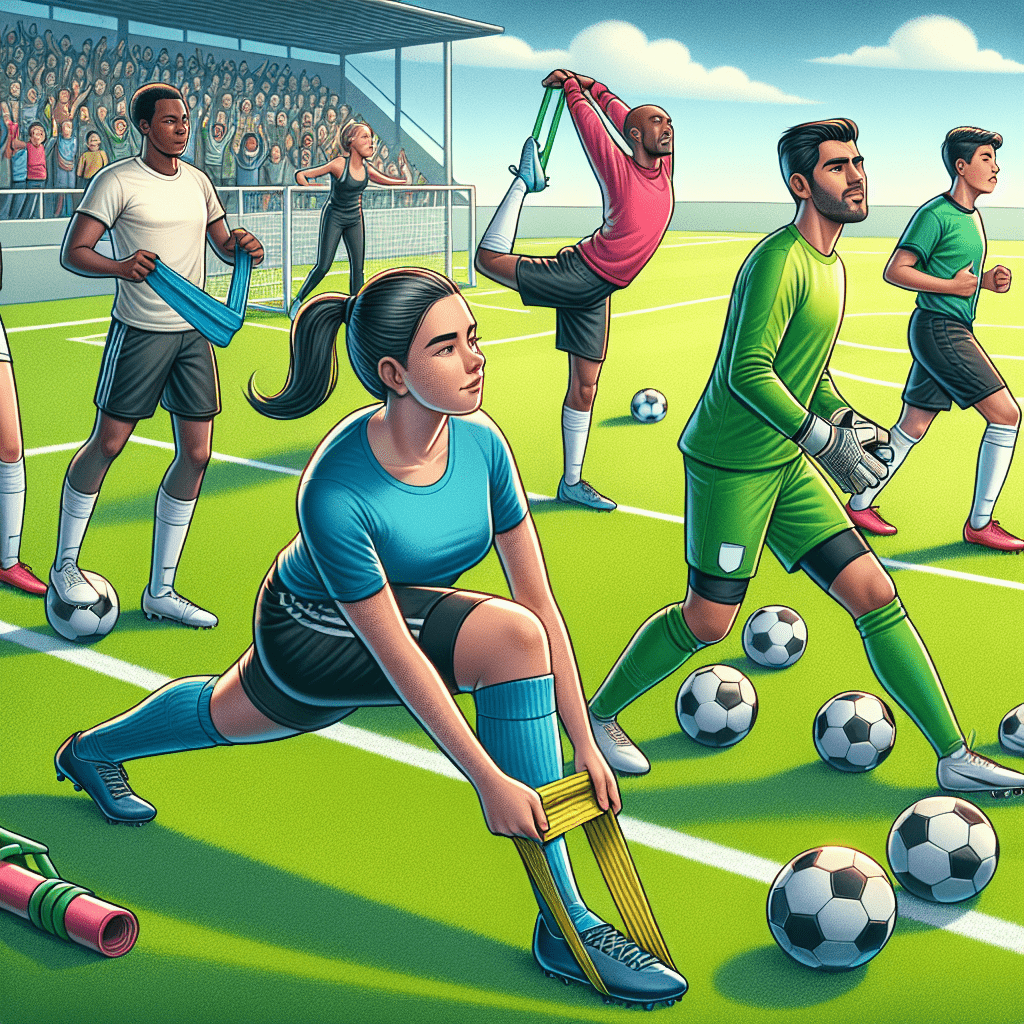[ad_1]
Kicking Injuries to the Curb: Effective Soccer Injury Prevention Strategies
Soccer is a beautiful game, loved by millions around the world for its blend of athleticism, strategy, and skill. However, like any sport, it carries a risk of injury. These injuries can range from minor knocks and bruises to more severe injuries such as ACL tears, concussions, and fractures that can sideline players for months. The key to a long and successful soccer career is not just dealing with injuries as they occur but preventing them from happening in the first place. This article explores effective strategies for preventing soccer injuries, ensuring players can enjoy the game safely and to their full potential.
Understanding Soccer Injuries
Before delving into prevention strategies, it’s essential to understand the common injuries in soccer. They include but are not limited to muscle strains (particularly hamstring strains), ankle sprains, knee injuries (such as ACL tears and meniscus tears), shin splints, and concussions. These injuries occur due to a variety of reasons such as overuse, direct impact, sudden changes in direction, and improper landing or falling techniques.
Prevention Strategies
The good news is that many soccer injuries can be prevented with the right strategies. Here are some of the most effective:
Warm-Up and Cool Down
It’s crucial for soccer players to prepare their bodies for the intensity of play. A proper warm-up increases blood flow to the muscles, enhances flexibility, and reduces the risk of strains and sprains. Dynamic stretching, which involves moving while stretching, is particularly beneficial before a game or practice. After the game, cooling down helps the body to recover, reducing muscle stiffness and soreness.
Strength Training
Strong muscles are less susceptible to injury. Incorporating strength training into a soccer player’s routine is vital for injury prevention. Focus on core strength, which is crucial for stability, as well as leg strength, to support the joints. Exercises that enhance balance and proprioception (the sense of body position) are also important, especially for preventing ankle and knee injuries.
Proper Equipment
Wearing the right gear is a simple yet effective injury prevention strategy. Soccer cleats should provide proper support and fit well to avoid blisters, ankle sprains, and knee injuries. Shin guards are essential for protecting against fractures and contusions. For goalkeepers, padded gloves can help prevent finger and hand injuries.
Technique
Proper technique is critical in reducing the risk of injury. This includes everything from the way a player kicks the ball to how they land after a jump. Coaches play a crucial role in teaching and reinforcing these techniques, ensuring that players are not putting unnecessary strain on their bodies.
Rest and Recovery
Overuse injuries are common in soccer, as players often participate in multiple leagues or do not rest adequately between games and practices. Ensuring players get enough rest, including taking breaks from soccer, is essential for injury prevention. Additionally, attention to nutrition and hydration is also critical for recovery and overall health.
Injury Prevention Programs
Several injury prevention programs have been developed specifically for soccer players. Programs such as FIFA’s “11+” have been shown to significantly reduce the risk of injuries when performed as part of a regular training routine. These programs focus on strength, flexibility, and balance exercises tailored to the needs of soccer players.
FAQs
Q: How often should I do strength training for injury prevention?
A: Incorporating strength training 2-3 times per week can significantly help in injury prevention.
Q: Can I continue to play soccer with a minor injury?
A: It’s crucial to allow an injury to fully heal before returning to play. Playing through a minor injury can lead to a more severe injury.
Q: Are there specific shoes that can help prevent soccer injuries?
A: Shoes with appropriate fit and support for your foot type and playing surface can help reduce the risk of lower limb injuries. It’s also important to replace soccer cleats when they wear down.
Q: How important is hydration in injury prevention?
A: Proper hydration is vital for overall health and can help prevent cramps and heat-related illnesses, which can indirectly lower the risk of injury.
Q: Should I stretch before or after playing?
A: Both. Dynamic stretching is recommended before playing to prepare your body for the activity. Static stretching, held for longer periods, is beneficial after activity to aid in recovery.
By implementing these strategies, soccer players can minimize their risk of injury and maximize their performance on the field. Prevention is key to a long and healthy soccer career, ensuring that players can continue to enjoy the beautiful game for years to come.
[ad_2]






